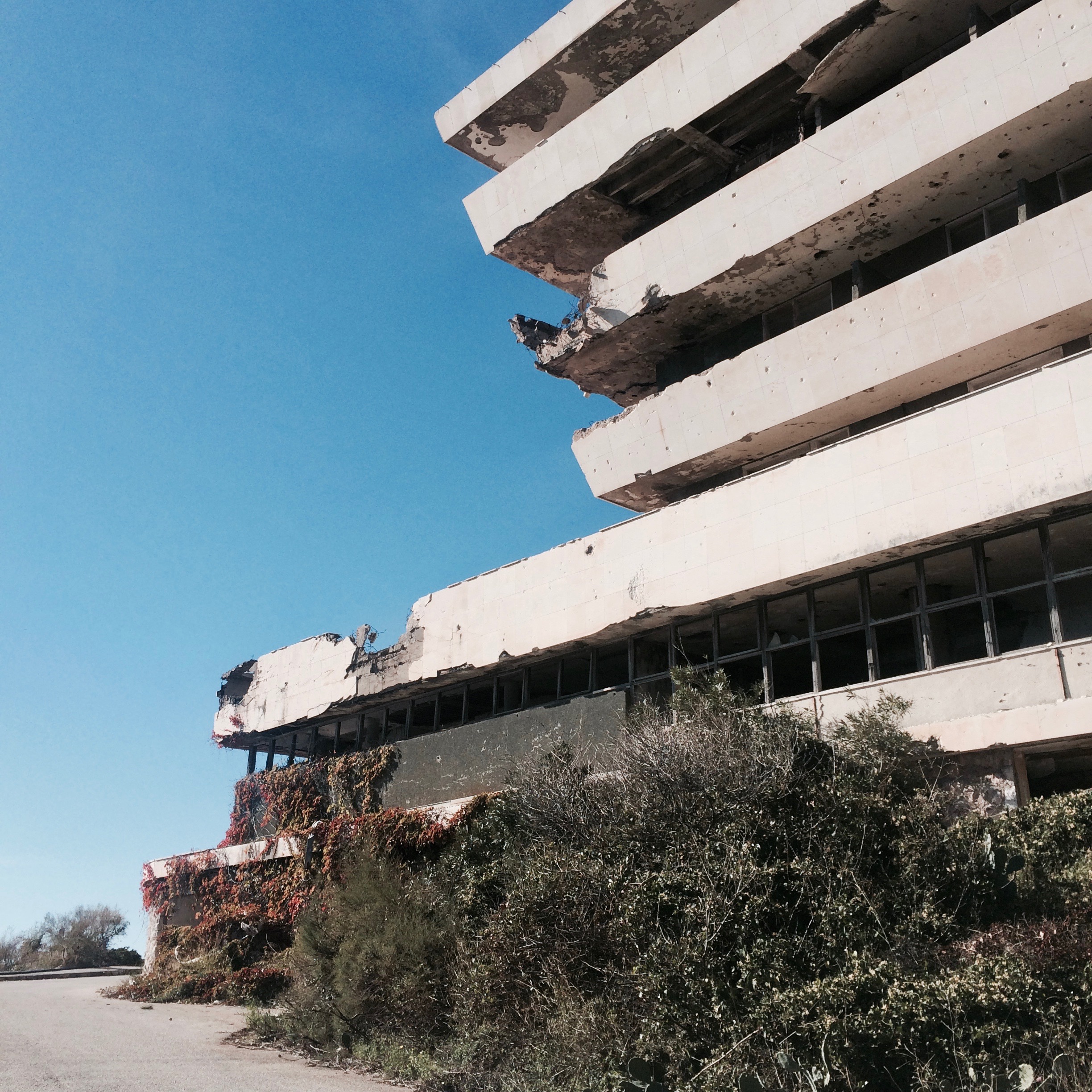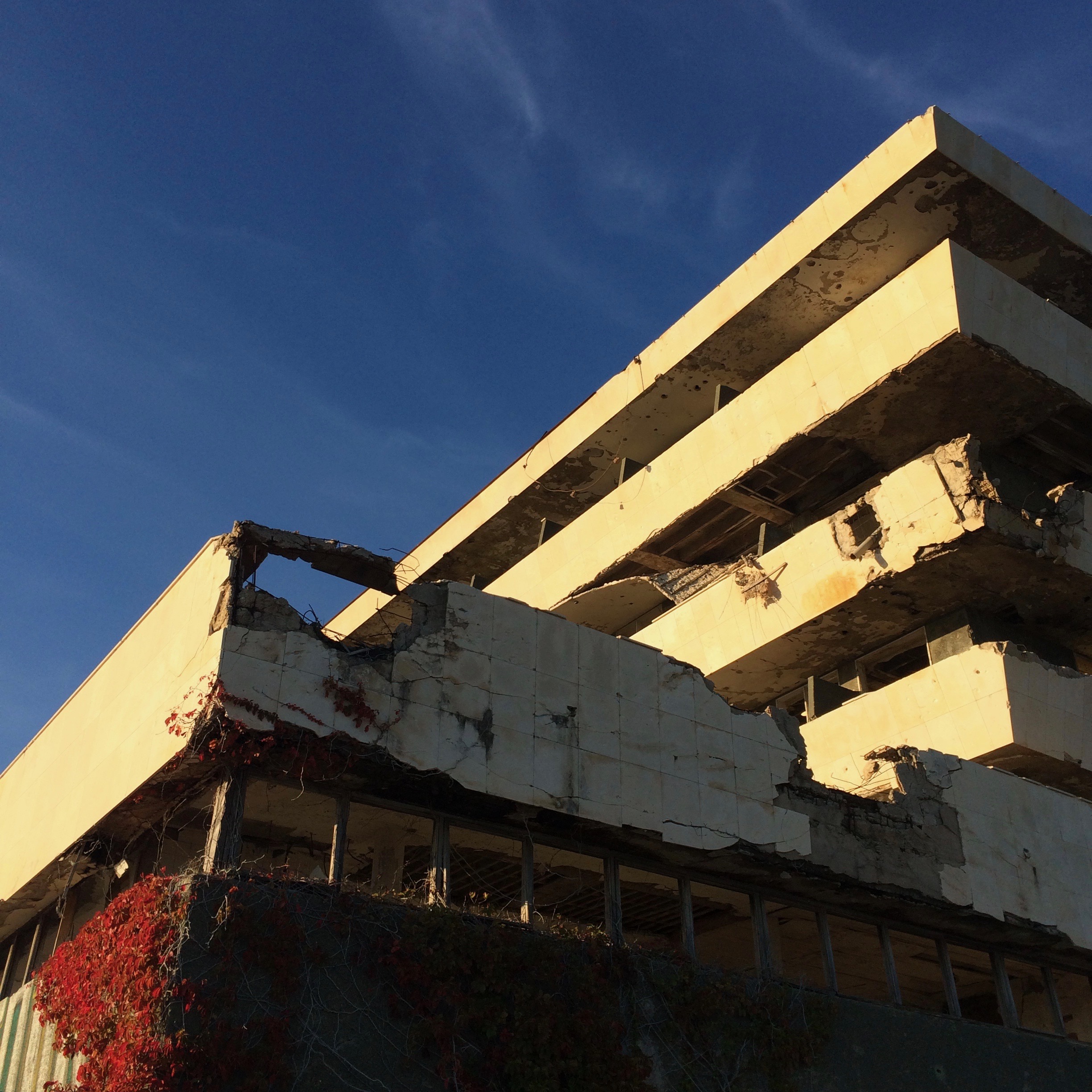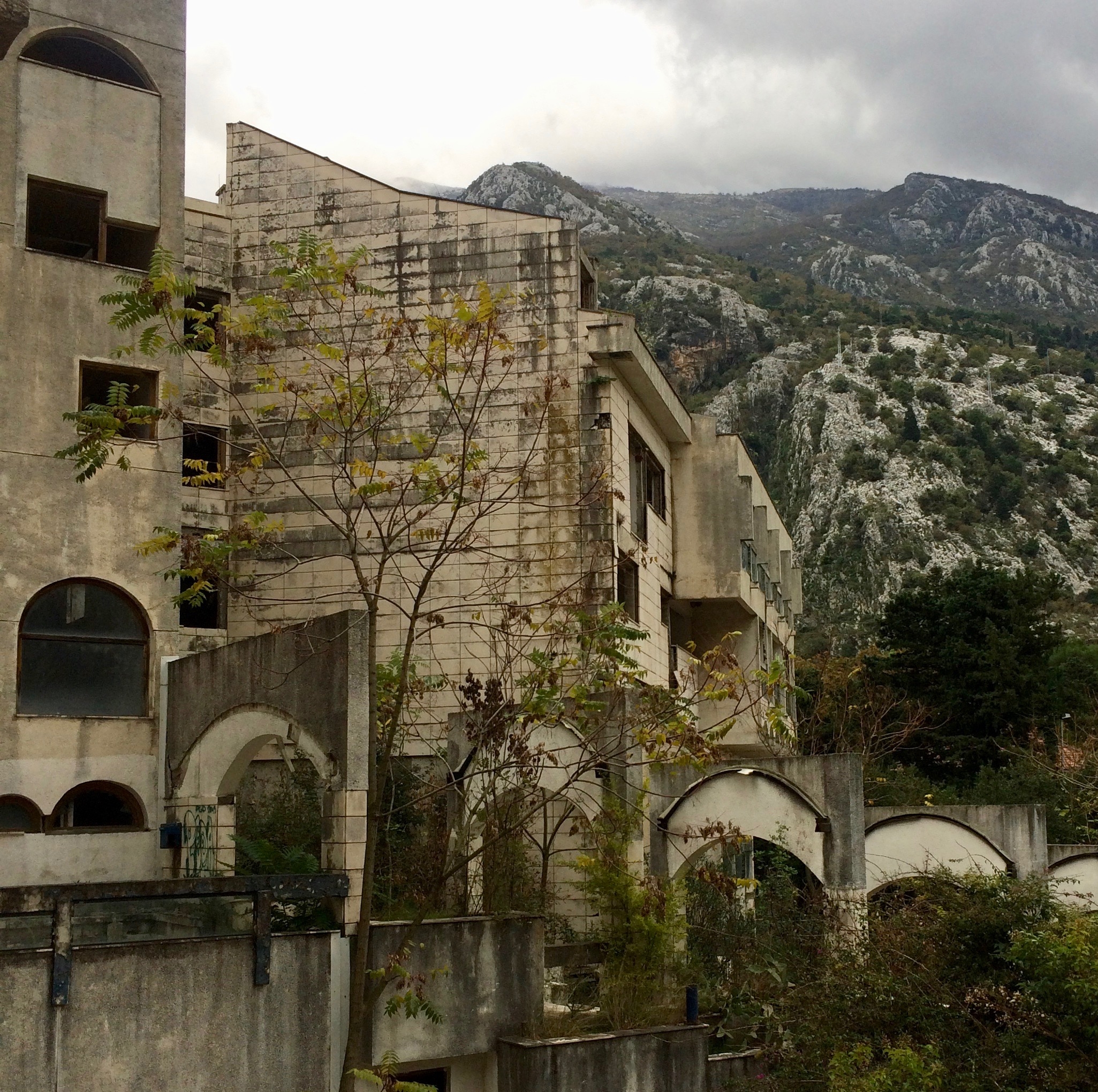
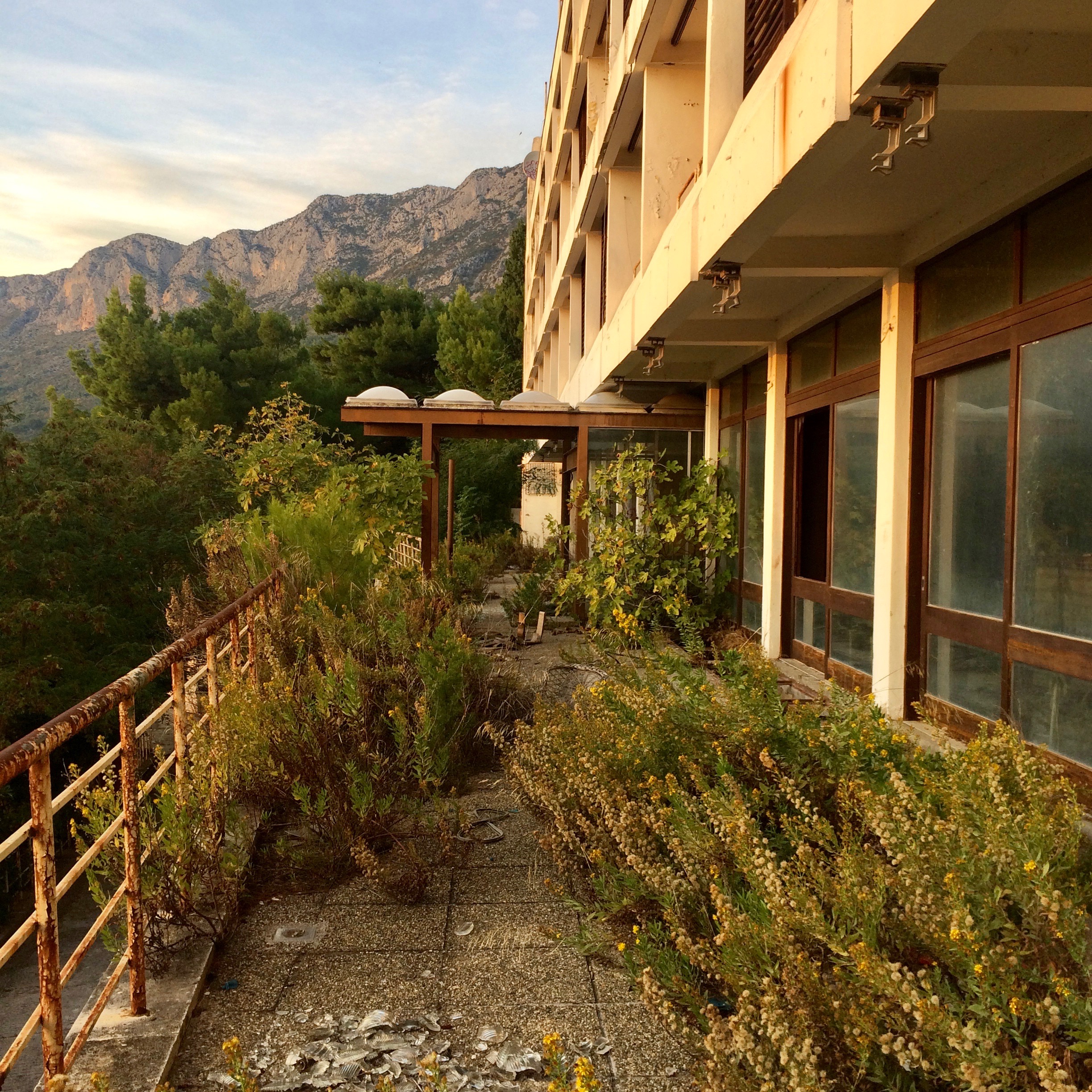
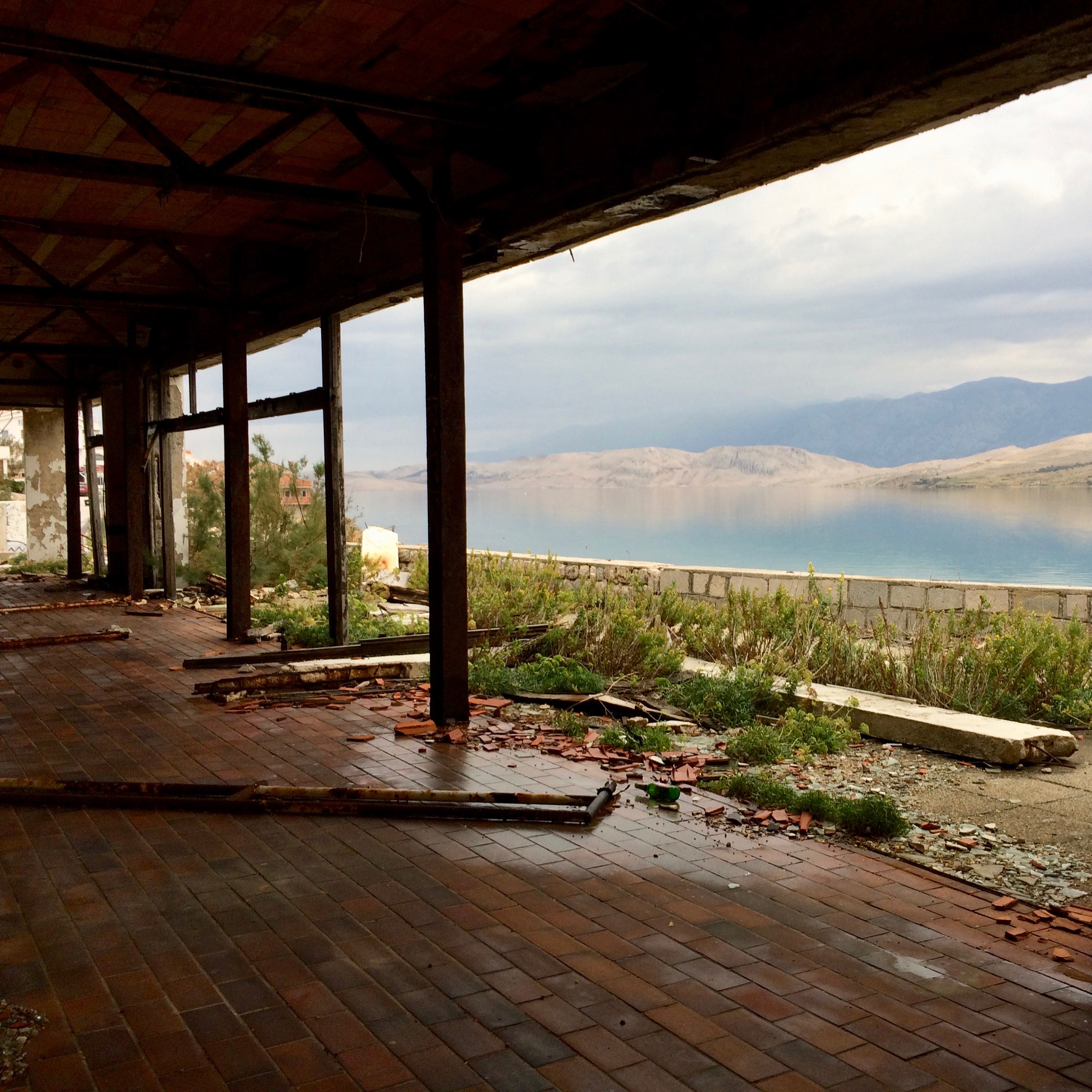
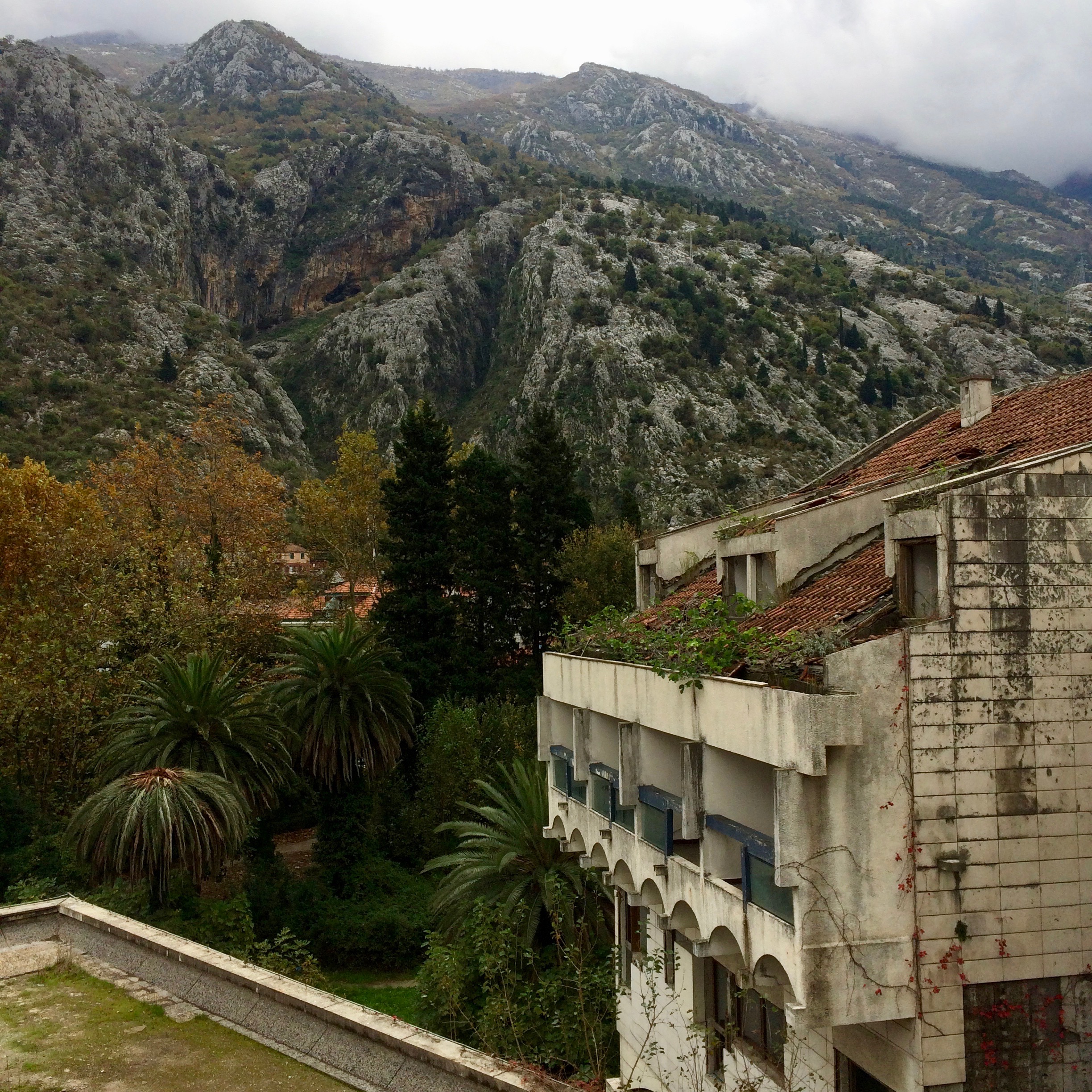
: : Odmaralište na moru
// B Tracy
The Adriatic coast of the former Yugoslavia is dotted with derelict hotels and resorts. There are close to a hundred within Croatia alone. Although each has its own story, common threads of war, corruption and neglect tie them together. Most sheltered refugees during the Yugoslav Wars of the nineties and some bear scars wrought by bullets and shells. Built and operated during the socialist period, they were state-owned and employee-run. Some were built for members of the military elite, while others hosted civilian workers or children's groups from the interior. Representing several forms of modernist vernacular from mid-century to concrete brutalism, they take forms including terraced honeycombs, an inverted pyramid, and something resembling a UFO on stilts. Each is an architectural curiosity and undeniably part of the built heritage of socialist Yugoslavia.
These audacious and unapologetic structures persist in a kind of limbo. The hotel industry in Croatia has been shrinking for years with well over half of foreign tourists (and nearly all domestic) now choosing private accommodations-- renting rooms, apartments and villas. Hotels, especially those built in the sixties and seventies, are considered cramped, dreary, and lacking in modern amenities. Requiring massive investments to bring back from ruin, abandoned socialist era hotels are poor candidates for restoration and especially unattractive to investors. Further complicating things, locating a current owner could be impossible. The breakup of Yugoslavia left a legacy of corrupt privatizations and ownership disputes that orphaned hotels. Locals refer to this combination of obstacles as a uniquely "Croatian problem" and speak in shades of resignation about the giants in their midst.
In contrast, I see these structures as in harmony with their surroundings. Like the drama of a Mayan temple poking up through the jungle canopy, their concrete forms sit proudly yet agreeably against the rugged limestone mountains of the Dalmatian Coast. The best seem to have emerged from the rock itself in some great upheaval. Their architects clearly strove to complement rather than dominate the dynamic topography of the region. It's unlikely that anything built in their place would be so skillfully integrated into the landscape. If it sounds like I'm advocating preservation, I am. The abandoned hotels have intrinsic value beyond architectural endowment. Their grounds are used as unofficial parks, quiet places for walks with friends. Their walls feature the work of local creatives and their rooftops provide spectacular views of the coastline.
I had seen these views in pictures and was intrigued enough to make pilgrimage visits to Haludovo Palace Hotel on the island of Krk, and Hotel Fjord on the Bay of Kotor. The rest I chanced upon while touring Croatia's coast highway by bicycle. It's easy to get a sense of what they've been through, not only because of the nature of their damage, but also by their atmosphere. Their tremendous embodied energy preserves a kind of dormancy-- there is warmth in them. It's as if they've entered a long slumber, surrounded by a heavy and unsettling silence. Exploring their vast interiors is to step outside the flow of time and into their infinite present. Associated with this feeling of suspension, it becomes possible to imagine a depopulated world, which temporarily relieves the pressure of being a human among so many others.
You can have your pick of the rooms these days, but it was a much different picture in the early nineties when war broke out throughout a rapidly fracturing Yugoslavia. Thousands of refugees were granted temporary housing in one of these posh seaside settings. When peace returned and they were forced to leave, many without jobs to return to, they took out their frustrations and resentments on the structures that sheltered them. They pillaged furnishings and vandalized interiors, accelerating the hotels' slide into decline. The Kupari Resort is an extreme case of this wartime treachery and a victim of the Croatian War of Independence. In October 1991, Yugoslav warships shelled Kupari and the small unit of Croatian fighters sheltered within. Kupari was eventually seized, looted, and burned by Yugoslav soldiers. What makes this story so darkly ironic is that Kupari was a holiday resort serving, almost exclusively, officers of the Yugoslav People's Army and their families-- its construction funded entirely by the military. The wives and children of the officers responsible for its destruction would have played on Kupari's beach, dined in its restaurants and slept in its beds only a few seasons before.
The chaos of the Yugoslav Wars colors the way locals relate to places like Kupari. For the younger generation, these are places of freedom, to be explored and enjoyed. For most of their elders, they simply mar their physical and mental landscapes-- they embody and perpetuate the memory of war. But perhaps there's something else at work here. Although I have no evidence beyond my own experience to support this claim, I assert that witnessing the slow disintegration of a structure by the natural forces of weather, plants and animals, facilitates the healing of trauma associated with that structure. I suggest to the residents of the towns where these structures rest, that they enter them with respect and reverence, that they breathe in the richness of decay and recognize it as a path to rebirth and renewal.
Perhaps this suggestion is related to my own desire that these structures persist long enough for me to visit them again-- to spend some time with them, to sit and open up and listen. Then again, despite the ravages they've suffered, Croatia's abandoned hotels maintain their dignity and seem grateful for their existence. They wish to be allowed to complete their life cycle and welcome the few that enter them with curiosity and wonder. They remind us that, should they be leveled - a five-star Marriott resort built on their graves, it may someday lay as they do.
